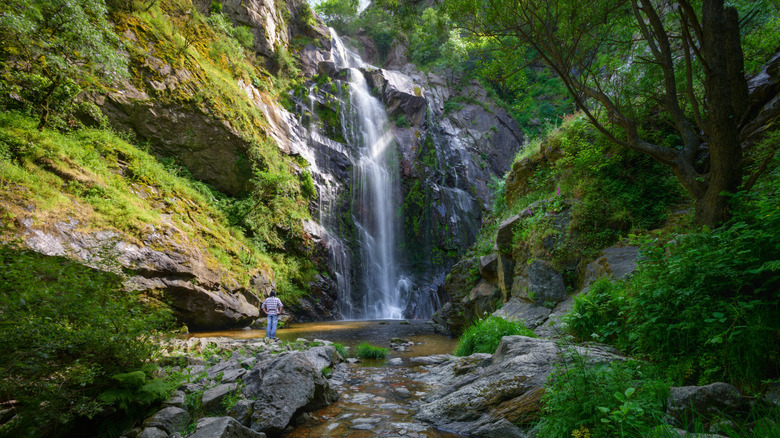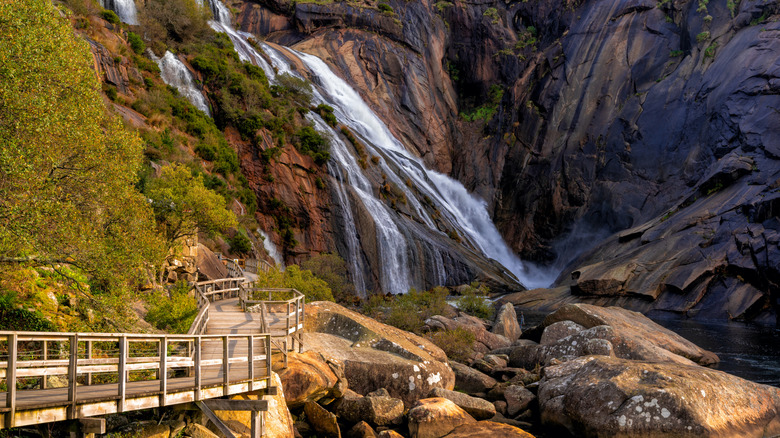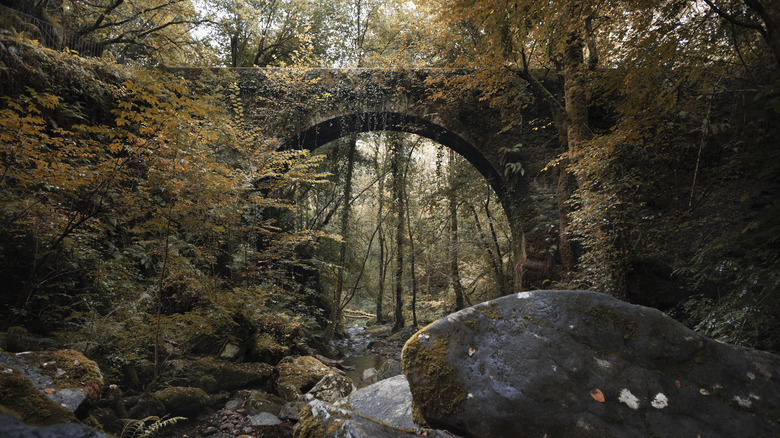This Magical Region Of The Spanish Coast Is Known For Its Abundance Of Waterfalls Nestled In Fairy Forests
Sometimes travel destinations become so well-known that their allure works against them. In the case of Spain, the country has been a heavy hitter for so long that its travel reputation often gets compressed under the banner of just a handful of cities. Going to Spain by default often means going to Madrid, Sevilla, Barcelona, and perhaps Valencia before hopping on a plane back home.
While there are certainly worse itineraries you could think of, the country has so much to offer beyond its marquee headliners. Of those, Galicia — a region in the northwest corner of Spain wrapped in a verdant cloak of forests, meadows, and hills — stands among the most unique. The antithesis to the country's drier central plateau region, you'll find dramatic waterfalls fed by frequent rainy weather and serpentine streams, and have the chance to traipse through ancient, moss-carpeted trails ringed by all kinds of enchanting flora.
Hunting those waterfalls makes for a spectacular and singular travel plan. Feel like checking out the only river in Europe that ends in a waterfall plunging into the sea? Galicia has got you covered. How about a series of emerald pools formed by cascading falls in a Biosphere Reserve that spans the border with Portugal? And don't get us started on the region's Neolithic-era forest that has remained largely unchanged for thousands of years. You've got every reason you need to skip Spain's most popular coastal escapes for something truly different, so get your hiking boots ready.
Galicia's fairytale waterfalls
You're spoiled for waterfall choices in Galicia, but there are several standouts. One must-see spot is the Fervenza do Toxa, one of the tallest waterfalls in the area at nearly 100 feet. Located in the town of Silleda in the Pontevedra province, you can reach the waterfall base via a short, 15-minute trail from the main road that passes through the town. Be sure you bring your swim gear for a dip in the cold river. For a more adventurous approach, take the 4-mile path from the nearby Carboeiro Monastery. It's a more strenuous trip, but it'll grant you access to river beaches and views of the archaeological ruin of the medieval San Paio monastery along the way.
Then there's Cascada de Vieiros. Located a short distance from the town of Vieiros, this waterfall is about as picturesque as it gets. A long, thin stretch of water (that can grow into a roaring cascade in winter) descends over several rock faces into a beautiful, tree-lined pool below.
But the Ézaro waterfall in the province of Dumbría is one of Galicia's most dramatic natural attractions, and it holds a unique claim to fame. It's the only spot in Europe where a river cascades into the sea as a waterfall. Plummeting nearly 100 feet from the Xallas River, the falls crash over river canyon walls before merging with the coastal waters below. The falls are easily accessible via a walkway located next to the site's parking lot and end in a well-maintained wooden viewing platform. Much like the hidden waterfalls in North Carolina's Smoky Mountains, the best time to visit these falls is during the winter and spring, especially after periods of heavy rainfall. Summer can bring with it crowds and trickling waters, so plan accordingly.
Galicia's enchanted forests and nature reserves
Waterfalls are just one aspect of Galicia's sprawling, distinct natural beauty. Its lush forests and nature reserves exude an almost primeval atmosphere. One of the area's enchanting spots is the Fragas do Eume Natural Park, located about an hour from A Coruña. The park is a rare example of a native European forest that has managed to survive since the Neolithic period. Here you'll find 100-year-old oak and elm trees spread across 22,000 acres, which you can pass under via eight marked hiking trails. Head to the park's Caaveiro Monastery if you want to feel like you're stepping into a setting that wouldn't be out of place in a Legend of Zelda game.
Equally as captivating is the Baixa Limia-Serra do Xurés Natural Park, part of the Gerês-Xurés cross-border Biosphere Reserve with Portugal. The area is a haven for wildlife, home to kestrels, wild boar, deer, and wolves. Take the Via Nova nature trail to hike along an ancient Roman military route. Visitors can also check out the ruins of Aguis Querguennis, a partially submerged Roman military base on the shores of the Limia River.
Getting to Galicia is easy. Santiago-Rosalía de Castro Airport puts you right in the heart of the region, with non-stop flights from several major European cities. Once you're here, renting a car is your best option for maximizing your exploration, as many of Galicia's natural gems are nestled in remote areas that aren't well-served by public transport. Accommodation options vary widely, from charming, upscale rural guesthouses (casas rurales) to major hotels in larger towns like Santiago de Compostela and Vigo. Spain is among the European countries with the lowest cost of living, which, in such a gorgeous region, is an added bonus.


